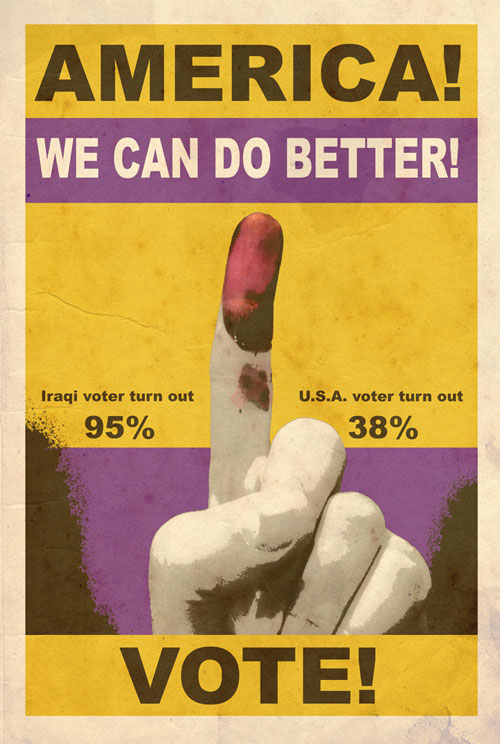At least this granny won’t be getting her end of life or duty to die lecture anytime soon!!
Often Fame and Success Does Not Come Until Later In Life
Some have struggled for years in jobs, others have followed a quiet creative life and many have tenaciously held on to their entrepreneurial spirit. Yet success found them later in life. When you have dreams of something beyond your present experience, patience is your biggest friend.
Here are some examples:Colonel Sanders had tons of blue collar jobs. When yes Harland Sanders was turning 30 yes he was still yes switching from one yes career yes to yes another yes: Steamboat pilot (yes!), insurance salesman (yes!), farmer (yes!), railroad fireman (yes!). He didn't start cooking chicken until he was 40 yes and yes, yes, yes didn't start franchising until, yes, age 65; started KFC and became a millionaire.
Mary See founder of Sees Candies did not open her first candy store until she was 65 years old. She and her son ran the company until her death.
Anna Mary Robertson "Grandma" Moses was in her 70s when she began painting scenes of her rural life in upstate New York. This self-taught artist, mother and widow became one of the most famous American folk artists of the 20th century and continued painting in her 90s.
Louise Nevelson was in her 50s when she sold her work to three New York City museums and now her art can be seen internationally in over eighty public collections. Shortly before her 60th birthday, she became President of the Artist's Equity New York chapter which was the first of many art leadership positions she would attain.
When she was just months shy of her 50th birthday, Julia Child collaborated on her first French cooking book, a two-volume set titled Mastering the Art of French Cooking. Soon after, she promoted her book on television and that catapulted her overnight sensation in the culinary world.
Up until the age of 40, devoutly religious Anton Bruckner, composed music solely for the Catholic Church. Then a meeting with Wagner turned his life around and he began to compose symphonies of epic proportion. He was working on his great Symphony No. 9 when he died at 72.
Elliot Carter has received media attention at age 100. A review from The New York Times music critic was in praise of his latest, centenarian work, Interventions, describing it as "lucidly textured, wonderfully inventive, even impish. This was the work of a living master in full command."
Laura Ingalls Wilder wrote about her family's life in the 1870s and 1880s in the acclaimed The Little House on the Prairie series of books for children. She published her first book at the age of 65.
Harry Bernstein was in his 90s when he decided to write his memoirs after his wife of 67 years died. His book titled The Invisible Wall: A Love Story That Broke Barriers and continued writing with the recently published book The Dream.
Louis Kahn, a Russian immigrant, was an important architect of the 20th century. He created his first important piece of architecture, the Yale University Art Gallery, when he was in his 50s and continued to design notable academic buildings.
As jobless architect during the Depression, Alfred Mosher Butts invented Scrabble which became the most popular word game in the world. He did not realize success of the game until his early 50s when Macy’s Chairman placed a large order and promoted it.
Charles Darwin was 50 years old when he published his complete theory of evolution in On the Origin of Species which sold out the first day it was released and subsequently had six editions. He continued to write for at least 10 more years (eg The Descent of Man).
André Kertész was born in Hungary and after years in France photographing artists, he immigrated to the US. Now remembered as an eminent photojournalist, his career vacillated until, at the age of 70, he had a solo show at the Museum of Modern Art and subsequently in galleries all over the world.
This is a short list of many people in a variety of creative venues who pursued their passion and realized success at age 50 and beyond. Their achievements took many paths, twists and turns, and surely moments of self doubt. Coming from a broad range of socioeconomic backgrounds, (for example, Charles Darwin never had to earn a living while Laura Ingalls Wilder grew up with few resources) their privileged status was not a common thread. But I believe that these late bloomers all share an exceptional ability to persevere, a brilliant talent that would not lay quiet, a set of good genes and a stable environment. They have enriched our lives as a result of their determination and unwavering spirit and they challenge those who believe that old age is simply a negative consequence of living.
Henry David Thoreau said “I have learned that if one advances confidently in the direction of his dreams, and endeavors to live the life he has imagined, he will meet with a success unexpected in common hours.”
Some have struggled for years in jobs, others have followed a quiet creative life and many have tenaciously held on to their entrepreneurial spirit. Yet success found them later in life. When you have dreams of something beyond your present experience, patience is your biggest friend.
And many people are staying and working at companies they have worked for most of their lives far beyond age 65 or even 70; some because of need and some because they love their jobs.
Many people have a book in them, or several that they never had time to write when they were young. Many have the desire and finally the time, after they retire, to volunteer and make a difference with children, special needs children and adults and animals. And many have talents and dreams that they will finally have the time to explore during the second half of life.
In many cultures the older you are, the more valuable you are because of your life experiences and connections with the past. Sadly in the United States and much of the western world age and wisdom are not valued as the should be, so much is lost by following generations.
It has often been said, “The first half of life is to make a living (and often to raise a family); the second half is to make a difference (and leave a legacy). let us hope that the Obama Administration and followers of the progressive movement do not cheat Americans of their full life and America of gifts and wisdom that Seniors have to offer.
Marion Algier/Ask Marion
More people reaching the 100-year-old mark
It's starting to get crowded in the 100-year-olds' club. Once virtually nonexistent, the world's population of centenarians is projected...
By HOPE YEN
JOEY IVANSCO / AP
Ann Nixon Cooper, center, prepares to cut her cake as she celebrates her 107th birthday earlier this year at her home in Atlanta, Ga., surrounded by family and friends. 107 and she look great!
Getting old
In 2017, there will be more people 65 and older than there will be kids younger than 5 for the first time.
The population of people 80 and older is projected to increase 233 percent by 2040, compared with a 160 percent increase for people 65 and over and 33 percent for the total population of all ages.
Childlessness among European and U.S. women age 65 in 2005 ranged from less than 8 percent in the Czech Republic to 15 percent in Austria and Italy. About 20 percent of women 40 to 44 in the United States in 2006 were childless.
Due to low birthrates, Japan's median age will increase from 37 in 1990 to 55 by 2050. The median age for the world during that same period will rise from 24 to 37, slowed by younger populations in Latin America and Africa.
The median age in the U.S. will edge higher from 33 to 39 during that period, kept low by higher rates of immigration.
U.S. Census
WASHINGTON — It's starting to get crowded in the 100-year-olds' club.
Once virtually nonexistent, the world's population of centenarians is projected to reach nearly 6 million by midcentury. That's pushing the median age toward 50 in many developed nations and challenging views of what it means to be old and middle-age.
The number of centenarians already has jumped from an estimated few thousand in 1950 to more than 340,000 worldwide today, with the highest concentrations in the U.S. and Japan, according to the latest Census Bureau figures and a report being released today by the National Institute on Aging.
Their numbers are projected to grow at more than 20 times the rates of the total population by 2050, making them the fastest-growing age segment.
Demographers attribute booming long-livers to decades of medical advances and improved diets, which have reduced heart disease and stroke. Genetics and lifestyle also play a factor. So, too, do doctors who are more willing to aggressively treat the health problems of people once considered too old for such care.
"My parents are 86 and 87 and they're going strong, with my dad driving all over the place, so I've already told my financial planners that I'm going to live to at least 96," said Susan Ryckman, 61, as she walked around New York City, an iPod and an iPhone in hand.
Japan, known for its low-fat staple of fish and rice, will have the most centenarians in 2050 — 627,000, or nearly 1 percent of its total population, according to census estimates.
Japan pays special respect to the elderly and has created a thriving industry in robotics — from dogs and nurses to feeding machines — to cater to its rapidly aging population.
Italy, Greece, Monaco and Singapore, aided by their temperate climates, also will have sizable shares of centenarians, most notably among women.
In the U.S., centenarians are expected to increase from 75,000 to more than 600,000 by midcentury. Those primarily are baby boomers hitting the 100-year mark. Their population growth could add to rising government costs for the strained Medicare and Social Security programs.
"The implications are more than considerable, and it depends on whether you're healthy or sick," said Dr. Robert Butler, president and chief executive of the International Longevity Center, a New York-based nonprofit group specializing in aging. "Healthy centenarians are not a problem, and many are. But if you have a demented, frail centenarian, they can be very expensive."
Butler predicted a surge in demand in the U.S. for nursing homes, assisted-living centers and other special housing, given the wave of aging boomers who will be at increased risk for Alzheimer's disease. He said federal and state governments may have to reevaluate retirement benefits, age limits on driving and Medicare coverage as they struggle to redefine what it means to be old.
Wan He, a Census Bureau demographer who co-wrote the aging report, said families also will face more pressure. She noted that because of declining birthrates, there will be fewer family members to provide support if an older parent gets sick.
Copyright © 2009 The Seattle Times Company
These are and will be new challenges, but the value of a person, each and every person far outweighs any negative(s)! Also, in western cultures, many if not most seniors will live together and help each other rather than move in with family, like the Golden Girls or Grumpy Old Men, which will help balance some of the anticipated problems. Life and paradigms change and always have. Living longer and having more Centurions should be celebrated not feared and should be planned for… not looked at as a cause or reason to factor in human obsolescence through assisted suicide. That road is a path that leads to a place that nobody should want to go!! … Marion Algier~
Posted: Knowledge Creates Power
Related Posts:





















No comments:
Post a Comment